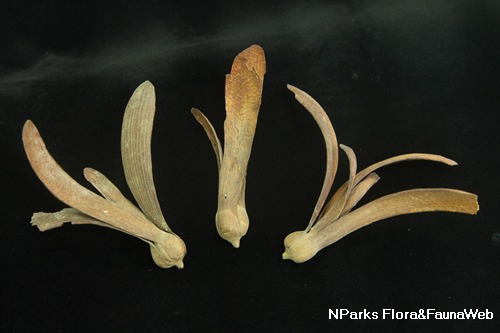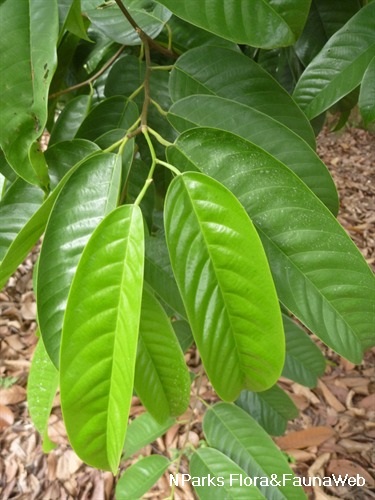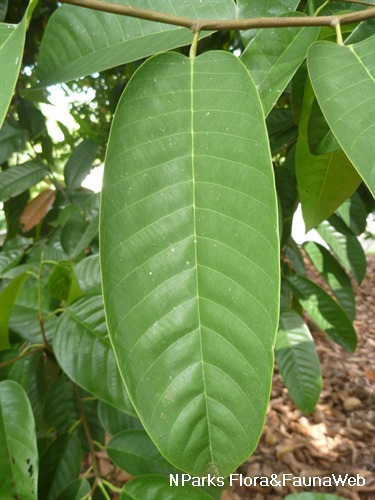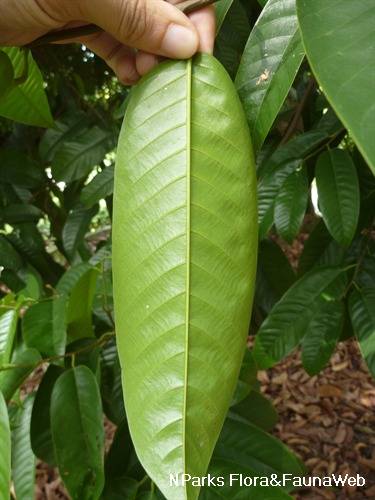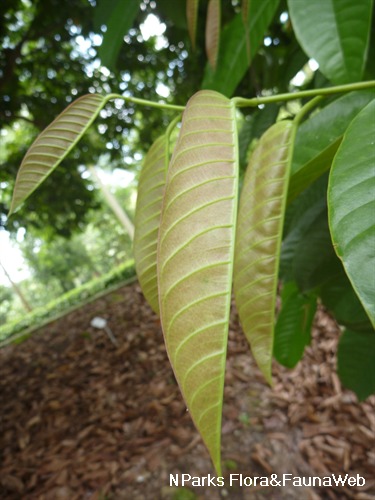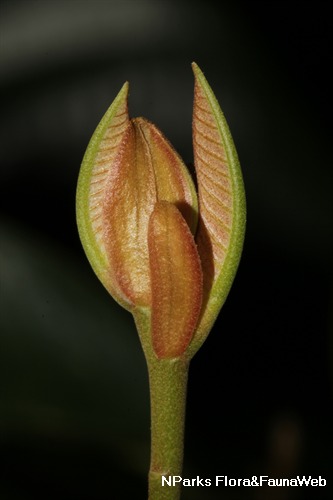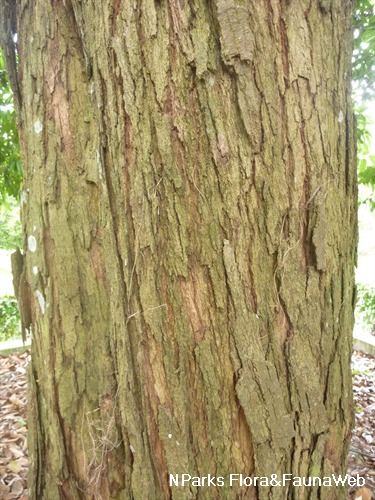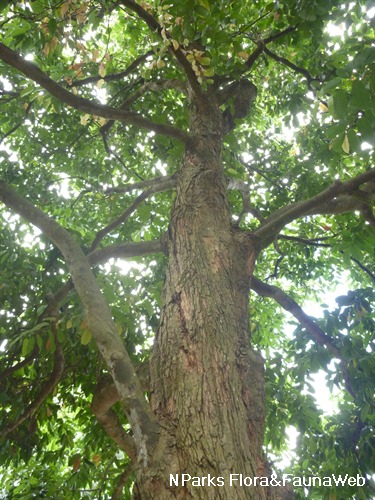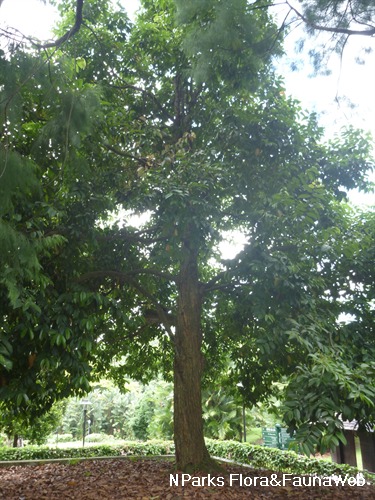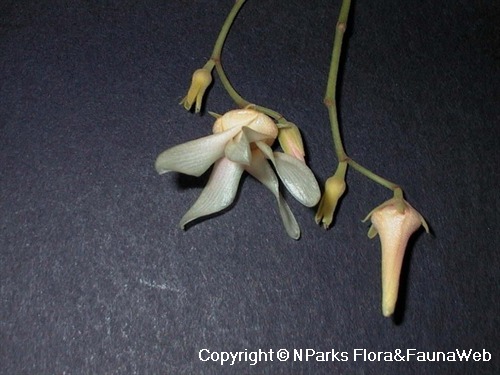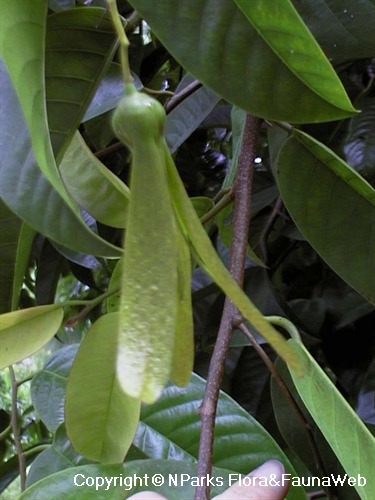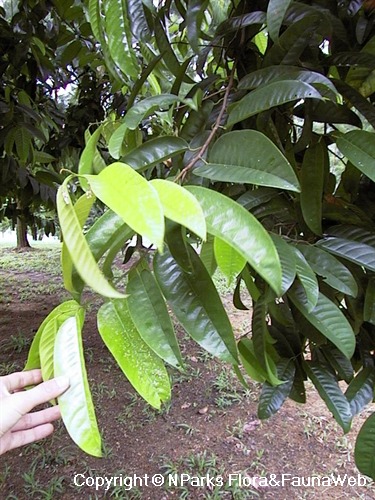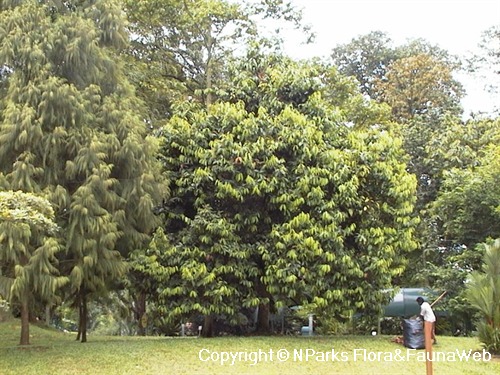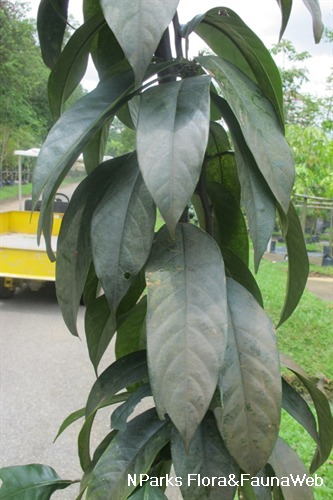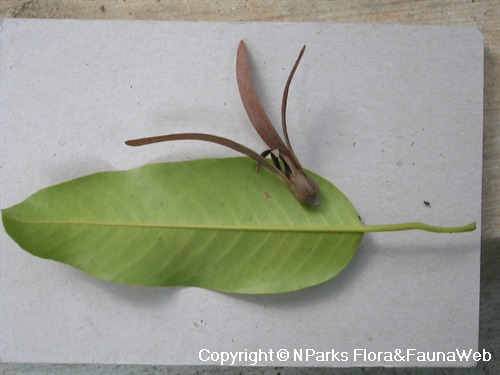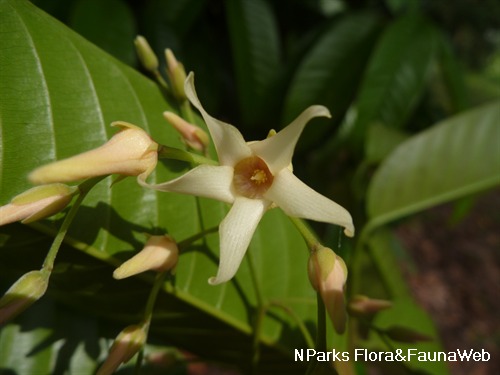
Back
Anthoshorea bracteolata (Dyer) P.S.Ashton & J.Heck.
| Family Name: | Dipterocarpaceae |
| Synonyms: | Shorea bracteolata Dyer |
| Common Name: | Meranti, Meranti Bukit, Meranti Pa'ang, Lampong Merahan, Lempong |
Name
Classifications and Characteristics
| Plant Division | Angiosperms (Flowering Seed Plants) (Dicotyledon) |
|---|---|
| Plant Growth Form | Tree (Big (>30m)) |
| Lifespan (in Singapore) | Perennial |
| Mode of Nutrition | Autotrophic |
| Plant Shape | Irregular |
| Maximum Height | 50 m |
Biogeography
| Native Distribution | Peninsular Malaysia, Singapore, Sumatra & Borneo |
|---|---|
| Native Habitat | Terrestrial (Primary Rainforest, Freshwater Swamp Forest) |
| Preferred Climate Zone | Tropical |
| Local Conservation Status | Native to Singapore (Critically Endangered (CR)) |
Description and Ethnobotany
| Growth Form | It is a tree up to 50 m tall. |
|---|---|
| Foliage | Its alternate, stalked leaves have papery or thinly leathery leaf blades that are oblong-egg-shaped to oval, 9-14 by 4-6 cm, and dull greyish brown when dry. |
| Flowers | Each flowering shoot is up to 10 cm long, and bears up to 5 yellow flowers that are 2 cm wide. |
| Fruit | Its green fruit consists of a narrowly ovoid nut that is about 2 cm long, with 3 longer wings that are 10 by 1.7 cm, and 2 shorter wings that are 8 by 0.7 cm. |
| Habitat | It grows on well-drained clayey and sandy soil in forests, swamps, alluvial sites, hillsides and ridges up to 700 m altitude. |
| Associated Fauna | Its flowers are insect-pollinated. It is the preferred local food plant for caterpillars of the moths, Andrioplecta pulverula, Andrioplecta shoreae, Assara albicostalis, Chrysocercops malayana, Orgyia postica, and Pteroma pendula. |
| Cultivation | It can be propagated by seed. |
| Etymology | Latin bracteolata, with bracteoles (modified leaves associated with flowers), referring to the persistent bracteoles of the flowering shoot |
| Ethnobotanical Uses | Timber & Products: Its timber is suitable for making furniture. |
Landscaping Features
| Landscaping | It may be suitable for parks. |
|---|---|
| Desirable Plant Features | Ornamental Flowers |
| Landscape Uses | General, Parks & Gardens |
| Thematic Landscaping | Economic Garden |
Fauna, Pollination and Dispersal
| Fauna Pollination Dispersal Associated Fauna | Caterpillar Moth Food Plant (Leaves) |
|---|---|
| Pollination Method(s) | Biotic (Fauna) (Insects (Ant, Beetle, Fly, Thrip, Wasp)) |
| Seed or Spore Dispersal | Abiotic |
Plant Care and Propagation
| Light Preference | Full Sun, Semi-Shade |
|---|---|
| Water Preference | Moderate Water |
| Plant Growth Rate | Moderate |
| Rootzone Tolerance | Moist Soils, Well-Drained Soils, Fertile Loamy Soils |
| Propagation Method | Seed |
Foliar
| Foliage Retention | Evergreen |
|---|---|
| Mature Foliage Colour(s) | Green |
| Mature Foliage Texture(s) | Papery, Leathery |
| Foliar Type | Simple / Unifoliate |
| Foliar Arrangement Along Stem | Alternate |
| Foliar Attachment to Stem | Petiolate |
| Foliar Shape(s) | Non-Palm Foliage (Oval, Elliptical, Oblong) |
| Foliar Venation | Pinnate / Net |
| Foliar Margin | Entire |
| Leaf Area Index (LAI) for Green Plot Ratio | 2.5 (Tree - Open Canopy) |
Floral (Angiosperm)
| Flower & Plant Sexuality | Bisexual Flowers |
| Flower Colour(s) | White, Cream / Off-White, Yellow / Golden |
|---|---|
| Flower Grouping | Cluster / Inflorescence |
| Flower Location | Axillary |
| Flower Symmetry | Radial |
Fruit, Seed and Spore
| Mature Fruit Colour(s) | Brown |
|---|---|
| Fruit Classification | Simple Fruit |
| Fruit Type | Indehiscent Dry Fruit , Nut / Nutlet |
Image Repository
Others
| Master ID | 1830 |
|---|---|
| Species ID | 3123 |
| Flora Disclaimer | The information in this website has been compiled from reliable sources, such as reference works on medicinal plants. It is not a substitute for medical advice or treatment and NParks does not purport to provide any medical advice. Readers should always consult his/her physician before using or consuming a plant for medicinal purposes. |

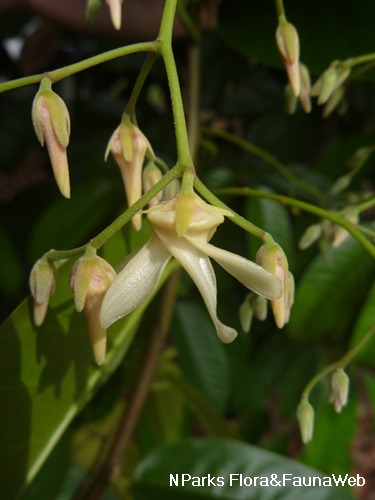
.jpg)
.jpg)
